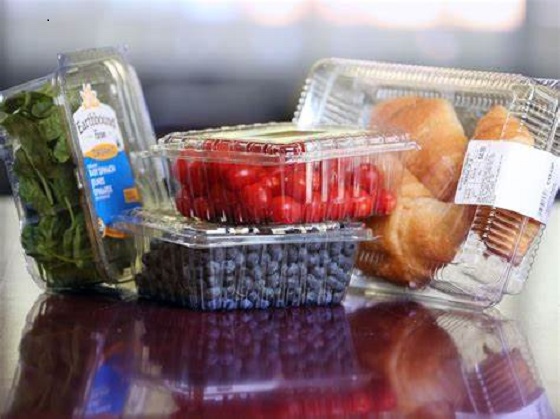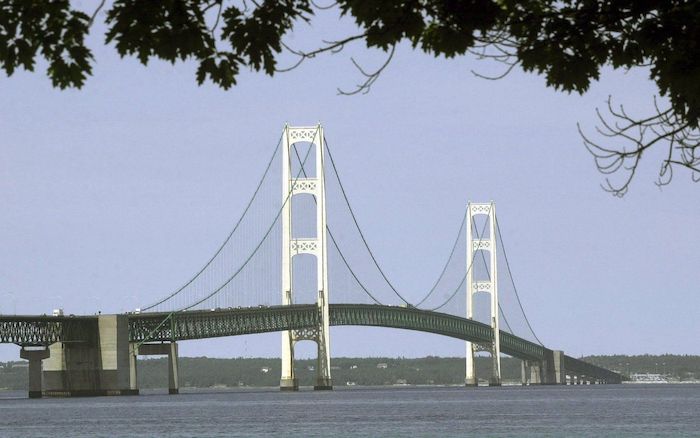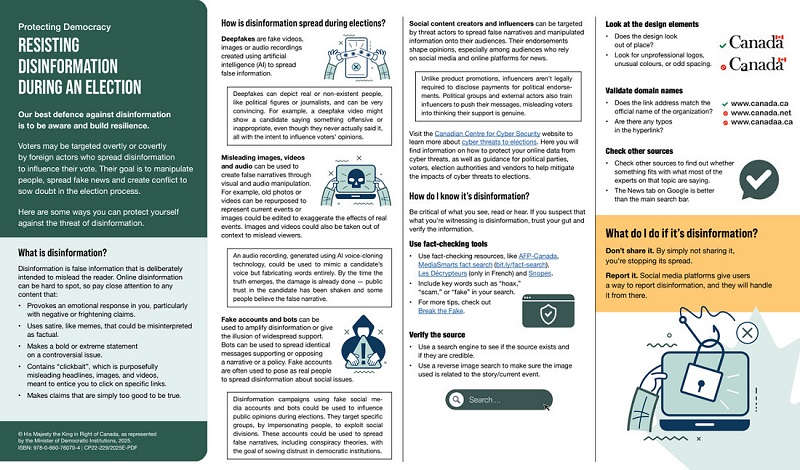Business
Do Minimum Wage Laws Accomplish Anything?

David Clinton
All the smart people tell us that, one way or another, increasing the minimum wage will change society. Proponents claim raising pay at the low end of the economy will help low-income working families survive in hyper-expensive communities. Opponents claim that artificially increasing employment costs will either drive employers towards adopting innovative automation integrations or to shut down their businesses altogether. Either way, goes the anti-intervention narrative, there will be fewer jobs available.
Well, what’ll it be? Canadian provinces have been experimenting with minimum wage laws for many years. And since 2021, the federal government has imposed its own rate for employees of all federally regulated industries. There should be plenty of good data out there by now indicating who was right.
The Audit is a reader-supported publication. To receive new posts and support my work, consider becoming a free or paid subscriber.
Historical records on provincial rates going back decades is available from Statistics Canada. For this research, I used data starting in 2011. Since new rates often come into effect mid-year, I only applied a year’s latest rate to the start of the following year. 2022 itself, for simplicity, was measured by the new federal rate, with the exception of British Columbia who’s rate was $0.10 higher than the federal rate.
My goal was to look for evidence that increasing statutory wage rates impacted these areas:
- Earnings among workers in full-service restaurants
- Operating profit margins for full-service restaurants
- Total numbers of active businesses in the accommodation and food services industries
I chose to focus on the food service industry because it’s particularly dependent on low-wage workers and particularly sensitive to labour costs. Outcomes here should tell us a lot about the impact such government policies are having.
Restaurant worker income is reported as total numbers. In other words, we can see how much all of, say, Manitoba’s workers combined took home in a given year. For those numbers to make sense, I adjusted them using overall provincial populations.
Income in British Columbia and PEI showed a strong correlation to increasing minimum wages. Interestingly, BC has consistently had the highest of all provinces’ minimum wage while PEI’s has mostly hung around the middle of the pack. Besides a weak negative correlation in Saskatchewan, there was no indication that income in other provinces either dropped or grew in sync with increases to the minimum wage.
Nation-wide, by weighting results by population numbers, we got a Pearson coefficient 0.30. That means it’s unlikely that wage rate changes had any impact on take-home income.
Did increases harm restaurants? It doesn’t look like it. I used data measuring active employer businesses in the accommodation and food services industries. No provinces showed any impact on business startups and exits that could be connected to minimum wage laws. Overall, Canada’s coefficient value was 0.29 – again a very weak positive relationship.
So restaurants haven’t been collapsing at epic, extinction-level rates. But do government minimums cause a reduction in their operating profit margins? Apparently not. If anything, they’ve become more profitable!
The nation-wide coefficient between minimum wages and restaurant profitability was 0.88 – suggesting a strong correlation. But how could that be happening? Don’t labour costs make up a major chunk of food service operating expenses? Here are a few possible explanations:
- Perhaps many restaurants respond to rising costs by increasing their menu prices. This can work out well if market demand turns out to be relatively inelastic and people continue eating out despite higher prices.
- Higher wages might lead to lower employee turnover, reducing hiring and training costs.
- A higher minimum wage boosts worker incomes, leading to more disposable income in the economy. Although the flip-side is that we can’t see strong evidence of higher worker income.
- Higher wages can force unprofitable, inefficient restaurants to close, leaving stronger businesses with higher market share.
In any case, my big-picture verdict on government intervention into private sector wage rates is: thanks but don’t bother. All that effort doesn’t seem to have improved actual incomes on a population scale. At the same time, it also hasn’t driven industries with workers at the low-end of the pay scale to devastating collapse.
But I’m sure it has taken up enormous amounts of public service time and resources that could undoubtedly have been more gainfully spent elsewhere. More important, as the economist Alex Tabarrok recently pointed out, minimum wage laws have been shown to reduce employment for the disabled and measurably increase both consumer prices and workplace injuries.
2025 Federal Election
The “Hardhat Vote” Has Embraced Pierre Poilievre

 David Krayden
David Krayden
Blue collar and unionized workers are supporting Pierre Poilievre and the CPC
When President Richard Nixon won a landslide in his 1972 reelection, he did so by broadening his own personal popularity and the appeal of the Republican Party to blue collar and unionized workers. It was called the hardhat vote and many working people embraced Nixon because he seemed to be talking the same language as they were. Nixon talked about law and order and getting tough on crime; safer streets and harsher penalties for serious crime. Although unionized workers had traditionally voted for the Democratic Party and seen the Republicans as the party of the wealthy, by 1972 the Democrats had moved far to the left on social issues and were completely out of touch with average Americans who saw Democratic presidential nominee Sen. George McGovern as being soft on crime and approving of the anarchy on the streets.
It’s precisely the language that Conservative Party of Canada leader Pierre Poilievere is speaking in the 2025 federal election. As support for the New Democratic Party has collapsed throughout the election campaign, don’t think most of it is going to the Liberal Party. Poilievre has been targeting blue collar workers for years with his emphasis on the trades and talking about middle class tax cuts and safe streets. A factory or construction worker is middle class and just want an affordable lifestyle for their families. They don’t have a lot of time for the woke underbelly of the Liberals or the NDP and are increasingly reluctant to support either party because both have appealed to elites.
Listen to Karl Lovett, the president of the Local 773 of the International Brotherhood of Electrical Workers, talk about Carney corruption and why he is supporting Poilievre and the CPC in 2025.
“Mark Carney also failed to pay $5 billion in Canadian taxes by hiding his company’s assets in Bermuda above a bike shop. Hard to believe that information comes from Canada’s NDP, or at least who is left of them, because the irony is, Mark Carney has eaten all those people alive. Even the mayor of Lima has warned Canadians not to vote for Mark Carney, and why for ripping him off the poorest of the poor people in Peru. That’s who he ripped off,” Lovett said.
“Listen, there are countless other outrageous examples proving that Mark Carney doesn’t give a damn about the Canadian working man. And now, as prime minister, which he’s not, Carney is promising to put carbon tax and tariff on the auto industry. It’s another rip-off screen that’s right. We’re getting punched by Trump on one side of the border, and Carney plans to punch us on this side of the border, also pretending it’s all about climate change, and now he’s made millions off the workers’ backs. He wants more than money. He wants more power. He wants all of the power to do whatever he wants to do. Mark Carney cannot be trusted with this power. Mark Carney cannot be trusted to protect workers,” Lovett continued.
The union leader told a cheering crowd that “Mark Carney is in it for himself, and when he loses this election, you can bet Mark Carney is going to leave Canada in a New York minute. But there’s hope, there’s hope, there’s our last hope. His name is Pierre Poilievere – the .only hope for Canadian workers. You see Mark Carney fooled Justin Trudeau. We can’t let him keep fooling us.”
“Local 773, which I represent, knows Pierre Poilievre very well. We can proudly tell you that Pierre has our back. Pierre has been putting Canadian people to work and Canadian workers. First, local 773 began working with Pierre Poilievre, the Conservative Member of Parliament Chris Lewis, some years ago, when it became all too clear that the Liberal Party had zero interest in helping out workers. Upon winning the leadership of the party, Pierre made Local 773 his very first priority, he came to my union hall. Pier made the Local 773 Visitor Training Center, and he met all our workers, and he made a pledge to me; he’s not going to turn his back on us, and I believe him,” Lovett said.
Toronto Sun columnist Joe Warmington agreed with me and you can hear that entire interview, below. “Labor wants to work, and they want to, you know, build things, and they want those good, paying jobs, and that’s what Poilievre has always been about, you know.”
“He wants more power. He wants all of the power to do whatever he wants to do. Mark Carney cannot be trusted with this power. Mark Carney cannot be trusted to protect workers,”
“Again, it’s hard to know, but I always felt … and I still think that Poilievre is going to pull this off because of these reasons that you’ve raised today, I never really bought into and again, I’m just one person’s opinion, and I go on the ground. In the air, the polls are saying, I know there’s this main street poll today, maybe it’ll swing differently. But in the air, it says one thing, and on the ground, it says another thing. And that clip you just showed, that’s the ground, that’s where the workers are, that’s where the families are.”
2025 Federal Election
Poilievre will cancel Mark Carney’s new Liberal packaging law and scrap the Liberal plastic ban!

From Conservative Party Communications
Conservative Leader Pierre Poilievre promised today that a new Conservative government will stop Mark Carney’s proposed Liberal food tax and scrap the existing Liberal plastic ban. Poilievre will:
- Stop proposed new labelling and packaging requirements that will raise the cost of fresh produce by as much as 34% and cost the average Canadian household an additional $400 each year.
- Scrap the Liberal plastics ban, including the ban on straws, grocery bags, food containers and cutlery, and other single-use plastics, letting consumers and businesses choose what works for them.
- Protect restaurants, grocers, and low-income Canadians from one-size-fits-all packaging rules that disproportionately affect those who can least afford it.
“After the Lost Liberal Decade, many Canadians can barely afford to put food on the table. And now Mark Carney and the Liberals want to make it even harder with a new food packaging law that will raise the price of food–again,” said Poilievre. “A new Conservative government will keep food prices down by scrapping the Liberal plastic ban and stopping Carney’s new Liberal food tax.”
After a decade of out-of-control spending and massive tax increases, families are spending $800 more on food this year than they did in 2024, and food banks had to handle a record two million visits in a single month. In Montreal, 44 percent of CEGEP students are experiencing some form of food insecurity, while places like Hawkesbury, Kingston, Toronto and Mississauga have all declared food insecurity emergencies.
And food prices are still rocketing upwards, surging by 3.2% over the last year, with no end in sight. In the last month alone, food inflation increased by 1.9 percentage points—the largest monthly jump in food prices in decades.
As if this wasn’t bad enough, Liberals have made life even more expensive and inconvenient for Canadians by banning plastics – including everything from straws to bags to food packaging. The current Liberal ban on single-use plastics will cost Canadians $1.3 billion dollars over the next decade.

Now Mark Carney wants to make it worse by adding complicated and costly new food packaging rules that will drive up the price of food even more–in effect, a new Liberal food tax. Plastic food packaging makes up 1/3 of all plastic packaging in Canada. The proposed Liberal food tax will cost the average Canadian household an additional $400 each year, waste half a million tonnes of food, decrease access to imported fruit and produce, and increase food inflation. The Chemistry Industry Association of Canada has also warned that this tax will put up to 60,000 Canadians out of work.
“The Liberals’ ideological crusade against convenience has already driven up food prices and the last thing Canadians need is Mark Carney’s new food tax added directly to your grocery bill,” said Poilievre. “The choice for Canadians is clear, a fourth Liberal term that will make food even more expensive or a new Conservative government that will axe the food tax and bring back straws, grocery bags and other items, to make life more affordable and convenient for Canadians – For a Change.”
-

 Daily Caller2 days ago
Daily Caller2 days agoTrump Executive Orders ensure ‘Beautiful Clean’ Affordable Coal will continue to bolster US energy grid
-

 2025 Federal Election2 days ago
2025 Federal Election2 days agoBREAKING from THE BUREAU: Pro-Beijing Group That Pushed Erin O’Toole’s Exit Warns Chinese Canadians to “Vote Carefully”
-

 COVID-192 days ago
COVID-192 days agoTamara Lich and Chris Barber trial update: The Longest Mischief Trial of All Time continues..
-

 2025 Federal Election23 hours ago
2025 Federal Election23 hours agoPRC-Linked Disinformation Claims Conservatives Threaten Chinese Diaspora Interests, Take Aim at PM Carney’s Debate Remark
-

 Energy2 days ago
Energy2 days agoStraits of Mackinac Tunnel for Line 5 Pipeline to get “accelerated review”: US Army Corps of Engineers
-

 2025 Federal Election2 days ago
2025 Federal Election2 days agoAllegations of ethical misconduct by the Prime Minister and Government of Canada during the current federal election campaign
-

 Energy13 hours ago
Energy13 hours ago‘War On Coal Is Finally Over’: Energy Experts Say Trump Admin’s Deregulation Agenda Could Fuel Coal’s ‘Revival’
-

 Daily Caller2 days ago
Daily Caller2 days agoDOJ Releases Dossier Of Deported Maryland Man’s Alleged MS-13 Gang Ties











